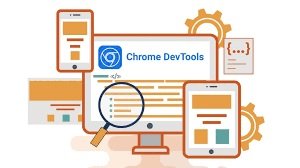
In modern society, where technology is growing at an unmatched pace, responsive websites and applications have become an integral part of our virtual reality. Such improvements have a reason for being smooth in the platforms. This article will look at the potential capability of Selenium WebDriver to be used in testing applications on mobile devices and also build responsive websites in the dynamic world of mobile application testing.
So, what are we waiting for? Let’s get started!
What is Selenium WebDriver?
In 2006, Simon Stewart created the Selenium WebDriver. It was the first cross-platform testing framework that controlled the browser at the operating system level. The Selenium WebDriver is a programming interface for creating and executing test cases. The software allows you to test all major programming languages, browsers, and operating systems. This software runs on different platforms and can be used in different languages with different language bindings.
Functionality of Selenium WebDriver
In concept, Selenium WebDriver acts as a go-between through which the code talks to different browser drivers. It operates in a translational mode that facilitates interaction and communication. The fact is, in practical testing, Selenium element locators are of crucial significance. These locators are used to develop test cases, which later enable specific actions to be performed on identified elements. The flexibility of this framework is that it can conduct tests on various platforms using different programming languages.
Benefits of Selenium WebDriver in Mobile App Testing
Here are a few of the benefits of Selenium WebDriver in mobile app testing:
- Cross-Platform Testing
One of the strengths of Selenium WebDriver is its ability to support cross-platform testing. The framework also promotes testing on various operating systems and browsers to ensure mobile application compatibility in varied environments.
- Simulating Real User Interactions
Selenium WebDriver can simulate real user interactions like taps, swipes, and other gestures. This is important in ensuring the user experience is reproduced accurately and identifying bugs in the mobile application’s responsiveness.
- Efficient Parallel Testing
Selenium WebDriver provides the capability of efficient parallel testing, running multiple test cases on multiple devices or browsers simultaneously. It expedites the testing process and expands the coverage to encompass a thorough assessment of the mobile application’s functioning in various contexts.
Role of Selenium WebDriver in Mobile App Testing
Selenium WebDriver is mainly known for automating web browsers and is quite popular for testing web applications. Nevertheless, mobile application testing cannot use Selenium WebDriver only. This is because Selenium WebDriver aims to interact with web elements on web browsers, which are not the same as mobile applications.
Selenium WebDriver can also be extended or integrated with other tools and frameworks to provide mobile testing capabilities. Here are the common approaches:
Appium
- Appium is an open-source tool that enhances the functionalities of Selenium WebDriver for mobile applications.
- It operates on Android and iOS platforms so that you can perform the Selenium WebDriver API tests.
- Appium acts as a user would with the mobile application. It presses buttons, types in text, and performs other actions.
- Also, Appium and cloud-based testing platforms like LambdaTest enable you to run Selenium Webdriver scripts on real devices or simulators/emulators, increasing the scope and efficiency of your mobile application testing.
Selendroid
- The other automation framework available for Android applications is called “Selendroid.”
- The Appium is used in conjunction with Selenium WebDriver to test Android applications and interact with native and hybrid Android applications.
Cross-Browser Testing Tools
- A cloud-based testing platform such as LambdaTest is a cloud-based testing platform that is compatible with Web and mobile apps and supports WebDriver Selenium. LambdaTest is an AI-powered test orchestration and execution platform that lets you run manual and automated tests at scale with over 3000+ real devices, browsers, and OS combinations.
- This platform enables you to run your Selenium WebDriver scripts on real devices or emulators/simulators. Hence, while Selenium WebDriver does not support mobile app testing, it can be coordinated with other tools and frameworks, like Appium, to automate mobile application testing. Through this integration, testers can use their current Selenium skills and infrastructure to execute LambdaTest for mobile app testing.
Overview of Responsive Web Design
Responsive web design develops websites that provide the best viewing and interaction experiences when used on desktops, mobile phones, or tablets. The objective is to ensure a smooth and unified user interface irrespective of the screen’s size, resolution, or orientation.
Selenium WebDriver is a widely used browser automation tool for tackling responsive design challenges. Let’s dive into some challenges and solutions:
Testing Across Devices
Challenge: Appropriate adaptation of websites on different devices. It is done on desktops, laptops, tablets, and smartphones.
Selenium Solution: Selenium WebDriver allows for automated testing on different devices. It is achieved by simulating user interactions on different browsers and devices. It allows to reveal and fix problems associated with layout, navigation, and functionality gaps between devices.
Cross-Browser Compatibility
Challenge: The design and functionality of web pages vary from browser to browser.
Selenium Solution: Selenium WebDriver is helpful in cross-browser testing, which allows developers to run tests on different browsers such as Chrome, Firefox, Safari, and Edge. This way, it aids in the identification of browser-specific problems and consistent user experience across browser environments.
Dynamic Content Handling
Challenge: Dynamic content is standard on responsive websites but might load or behave differently depending on the screen size and device.
Selenium Solution: The mechanism for waiting for the elements to load in Selenium makes it suitable for dynamic content handling. It allows test scripts to consider diverse loading times and content variation that aligns with responsive design.
Viewport and Media Queries
Challenge: CSS media queries are used to apply different stylesheets based on the device’s characteristics, such as screen width.
Selenium Solution: testers can specify the browser’s window size and pretend various viewports using Selenium WebDriver. It will ensure that the website responds correctly to media queries and adjusts the layout in response to the conditions.
Best Practices in Mobile and Responsive Testing
Below are the eight best practices in mobile and responsive testing:
Regular Updates on Mobile Browsers
Challenge: Mobile browsers undergo frequent updates, introducing new features, bug fixes, and changes to their rendering engines. Failure to stay updated can result in testing inconsistencies and compatibility issues.
Best Practice: Selenium WebDriver users should regularly update their testing environments to align with the latest versions of mobile browsers. It involves keeping track of browser release notes and ensuring the testing infrastructure reflects the current mobile landscape. This proactive approach helps identify and promptly address issues associated with new browser versions.
Continuous Integration for Timely Feedback
Challenge: In a rapidly changing development environment, delays in identifying and addressing issues can hinder the progress of a project. Manual testing or infrequent test execution may lead to late bug discovery and increased development cycles.
Best Practice: Integrating Selenium WebDriver tests into a continuous integration (CI) pipeline is crucial for obtaining timely feedback on code changes. By automating the execution of tests whenever there’s a code commit, development teams receive immediate feedback on the impact of changes. This practice facilitates early detection of mobile and responsive design issues, allowing for quicker resolution and a more efficient development lifecycle.
- Benefits of CI in Mobile Testing:
- Faster Feedback Loop: Automated tests run automatically with each code change, providing rapid feedback to developers.
- Consistent Testing Environment: CI ensures that tests are executed in a controlled and reproducible environment, reducing the likelihood of environment-specific issues.
- Collaboration: CI promotes collaboration between development and testing teams, fostering a shared responsibility for quality throughout development.
- Early Issue Detection: Bugs and issues are detected early in the development process, reducing the cost and effort of fixing issues in later stages.
Integration with CI Tools
Selenium WebDriver can seamlessly integrate with popular CI tools like Jenkins, Travis CI, or GitLab CI. This integration allows for the automatic execution of test suites whenever there’s a change in the codebase.
Device and Browser Matrix
Challenge: The mobile landscape is diverse, comprising different devices, screen sizes, and operating systems. There are potential issues that may be missed on less common configurations when testing on a limited set of devices.
Best Practice: Provide a thorough device and browser matrix representing the target audience. Broad coverage testing on different devices, browsers, and versions. Test on the most popular devices and browsers that your audience uses and a little bit of the less common configurations.
Parallel Test Execution
Challenge: Time-wise, executing test cases sequentially may not be the best way to go, especially when dealing with many test cases and units.
Best Practice: Run multiple tests on different devices or browsers in parallel. It drastically cuts down the whole test execution period, making it possible to obtain quicker feedback and faster tracking of cross-device or cross-browser problems.
Real User Scenarios and Network Conditions
Challenge: However, testing in perfect conditions may not reflect the real world, where users might experience different network speeds and connections.
Best Practice: Test under different network conditions, including 3G, 4G, and slow connections. Also, consider design test cases based on user interaction, such as gestures, swipes, and taps, which are widely used on mobile devices.
Usability Testing
Challenge: Responsive design is not only about visual and functional aspects; it is about ensuring a good user experience across the devices.
Best Practice: Conduct usability testing to determine how the website or application is used on different devices. It entails evaluating navigation, readability, and general user satisfaction. Functional testing is complemented by usability testing, which reveals the user-friendliness of the responsive design.
Cross-Device and Cross-Browser Debugging
Challenge: Responsive testing often neglects accessibility, but it’s critical to an inclusive user experience.
Best Practice: Incorporate accessibility testing into your mobile testing strategy. Please verify that your responsive design adheres to accessibility standards, making it usable for disabled individuals. The accessibility features can be evaluated using various automated tools and manual testing methodology.
Therefore, a major mobile and responsive testing best practice is an awareness of new releases of mobile browsers, along with the incorporation of Selenium WebDriver tests into a continuous integration pipeline. Implementing the described practices leads to a proactive, collaborative, and productive development environment that, as a result, culminates in quality software delivery on time.
Accessibility Testing
Challenge: Responsive testing often neglects accessibility but it’s key to an inclusive user experience.
Best Practice: Include accessibility testing as part of your mobile testing strategy. Ensure that your website is responsive and inaccessible to the disabled. The accessibility features can be evaluated using various automated tools and manual testing methodology.
Therefore, a major mobile and responsive testing best practice is an awareness of new releases of mobile browsers, and the incorporation of Selenium WebDriver tests into a continuous integration pipeline. Implementing the described practices leads to a proactive, collaborative, and productive development environment that, as a result, culminates in quality software delivery on time.
Conclusion
Selenium WebDriver is a powerful tool used in the testing of mobile apps as well as responsive websites. Selenium webdriver is an essential tool in mobile testing that can set up a testing environment, handle gestures, and ensure security.
Therefore, learning is a continuous process in an ever-changing mobile testing context.
The mobile testing landscape will continue to evolve with the development of technology. Learning should be continuous and flexible enough to adopt new techniques like Selenium WebDriver in order to be ahead in this changing field.
Moreover, LambdaTest has been a worthwhile platform that provides complete and adequate cross-browser testing. It is a cloud-based system where individuals can test their web pages using various browsers and device types. Running cross-browser and cross-device testing using LambdaTest significantly increases testing scope and probability for success. The better quality of web applications you produce is the result of that.







